Maybe it’s time we all quit trying to outsmart the truth and let it have it’s day. — Alfred
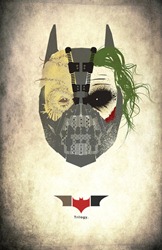
In Act I (Batman Begins), we meet a Gotham overcome by corruption. The city rots, and crime runs rampant. The few good Gothamites are to afraid of organized crime to make a stand. This fear takes Bruce Wayne’s parents, so Bruce resolves to take back his city.
Bruce becomes a symbol of fear. His goal is to out-terrorize fear.
Bruce’s plan seems to be working – he saves the city from Ras al Guhl and the League of Shadows, and inspires men like Jim Gordon to stand tall against crime.
But as Act II (The Dark Knight) begins, we learn that the fight is just beginning. A new villain – the Joker – arises against Bruce. The Joker wants to prove that Gotham is irredeemable, that people are basically selfish and fearful.
The Joker torments Harvey Dent, Gotham’s new DA who represents everything Bruce had hoped to inspire using the Batman persona. Harvey succumbs to the Joker’s plans, going on a murderous rampage of vengeance before falling to his death. To protect his reputation and the city’s improvement, Gordon and the Batman lie, blaming Batman for Harvey’s crimes.
Act II ends with Batman failing to inspire Gotham to hope instead of fear. His tenuous victory rests on a lie. The scene is set for the final act, The Dark Knight Rises.
Act III resolves the conflict. The main character – through their Hero’s Journey – acquires the skills necessary to achieve victory and a renewed sense of person and purpose.
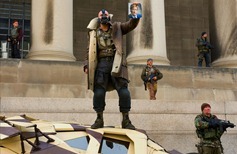
The film opens eight years after the events of Act II. We learn that Gotham has a peaceful, crime-free façade. Thanks to the Dent Act, Gotham’s criminal element has been locked away. On the surface, it would seem that Bruce has won.
But the peace we see is fragile, and the foundation is crumbling. The Dent Act – based and passed on Gordon’s lie about Harvey – is unjust. It’s effective, but it’s unjust. It’s not a pure, true victory.
Bruce, too, is the victim of a lie. Alfred never told Bruce that Rachel had chosen Harvey over him. So Bruce has become a shadow of the person he was. He’s unable to imagine a life beyond Rachel.
Ultimately, neither Harvey nor Bruce could save Gotham. Both succumbed to the fear of death.
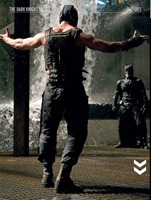
When the most brutal, implacable evil yet comes to Gotham, Bruce becomes Batman once more. He’s confident that his symbol of fear will be enough to stop Bane. But he’s wrong.
Bruce cannot save Gotham while he is captive to death. When he confronts Bane, Bane breaks him.
Bruce learns that his fear-based persona is powerless against fear incarnate.
You have merely adopted the shadows. I was born in them… The darkness betrays you because it belongs to me. — Bane
Bruce’s hero’s journey transforms Bruce into a symbol of hope, not fear. He’s able to come back to Gotham once more, to rescue the city from the League of Shadows. The League is now led by Ras’ daughter, Talia al Guhl. She’s dedicated to Gotham’s fall, as convinced as her father was of Gotham’s evil.
Innocent is a strong word to throw around Gotham, Bruce — Talia
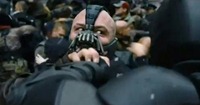
Bruce wages the final battle for the soul of Gotham. Because he has become more than just an agent of fear, he can overcome fear. Bruce has become Hope, and his example leads Gotham into the light of salvation.
The future Bruce purchases for Gotham with his death* is one that overcomes fear, that steps into the light of hope.
One of the film’s most beautiful moments is just before Batman flies off with the bomb. Gordon claims the people of Gotham deserve to know who their hero is. Batman replies:
A hero can be anyone Even a man doing something as simple and reassuring as putting a coat over a boy’s shoulders to let him know the work hasn’t ended. — Batman
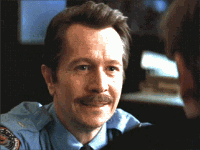
He’s referencing a moment at the beginning of Batman Begins, when then-Lieutenant Gordon comforts young Bruce in the wake of his parents’ murder. Bruce implies that this small moment was one part of his journey that brought him to this point.
In his own small way, Gordon played a part in Gotham’s salvation. Because Batman is a symbol of hope, and Gordon offered hope to young Bruce, Gordon has played the part of Batman.
